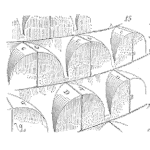
Reading a datasheet to determine a reliability value may take some investigative work. Whenever I see a fit rate based on failure-free testing, I am curious about how they did the testing and the calculations. [Read more…]
Your Reliability Engineering Professional Development Site
by Fred Schenkelberg 4 Comments

Reading a datasheet to determine a reliability value may take some investigative work. Whenever I see a fit rate based on failure-free testing, I am curious about how they did the testing and the calculations. [Read more…]
by Fred Schenkelberg Leave a Comment

Reaching for a goal may include taking some risks. In reliability testing, we are often limited by the number of samples available for testing. And, in the case where time is available or the acceleration factor is high we can take advantage of testing longer. [Read more…]
by Fred Schenkelberg 2 Comments

One of the most often asked questions of reliability professionals (or statisticians) is related to how many samples for a test? This typically is not an easy question to resolve without some work and knowledge of the testing in question. We are often asked anyway, and expected to have an answer.
While not the most often asked question on the CRE exam, you might see something related. Budget planning, prototype counts, test equipment sizing, etc. all need an estimate for sample size. [Read more…]
by Fred Schenkelberg 5 Comments

“Statistics is the language of variation.” I’m sure that is a quote by someone, not me, though. It is true. Statistics is all about variation. In this post let’s explore some of the ways statisticians talk about data and specifically the amount of dispersion in the data. [Read more…]
by Fred Schenkelberg 1 Comment

This is hopefully completely a review. The mastery of basic statistical terms is important as many of the questions on the CRE are statistical in nature and rely on your understanding the terms. Let’s simply review the terms, and do let me know if you have any questions.
Let’s take a random sample from a population. Given a [Read more…]
by Fred Schenkelberg 1 Comment

Generally, I do not talk about statistics before 10am – it’s not polite.
As a reliability professional, statistics is a central feature of the value I bring to the team. And, not just the reliability statistics, all stats. It continues to amaze me how many engineers, scientists, and professionals tend to avoid statistics. [Read more…]
by Fred Schenkelberg 5 Comments

There are four functions related to life distributions of importance to reliability engineering.
Nearly all textbooks on reliability either introduce or use these functions. Likewise, nearly every calculation related to reliability statistics also uses at least one of functions.
Suppose we produced 100 units of a product and tracked them all till failure over time.
Eventually, all of them would fail. And, unlike the Parson’s One Hoss Shay the products and their components would not all fail at the same time.
One way to track the failures over time is to use a simple histogram.
By plotting the number of failures each month, for example, we would [Read more…]
by Fred Schenkelberg 1 Comment

Understanding the math is critical not only for the exam, but it is also important for your ability to function as a reliability professional.
Most of us did not enjoy our undergraduate statistics course. It was just another course to endure as part of being in an engineering or science track.
The basic concepts and approaches to working with data are fundamental for some many situations. [Read more…]